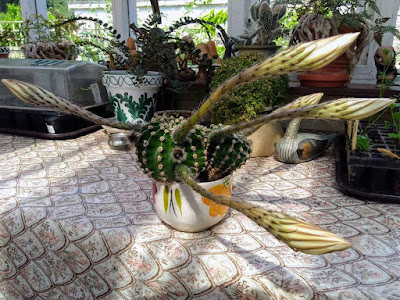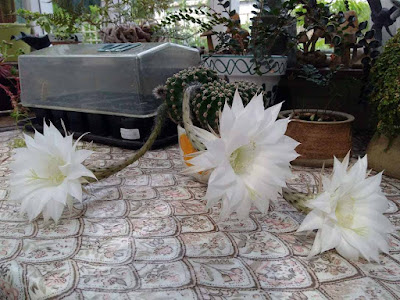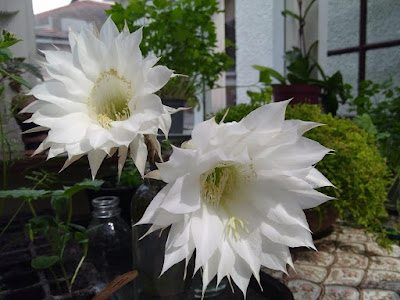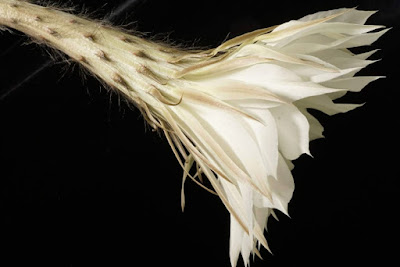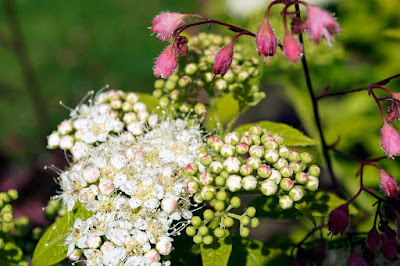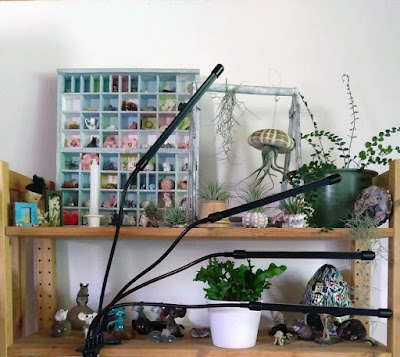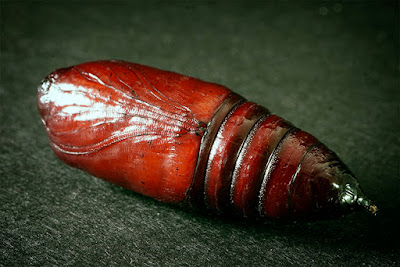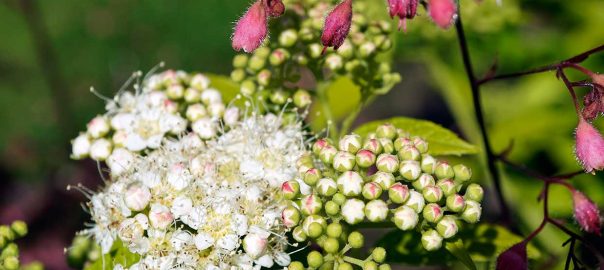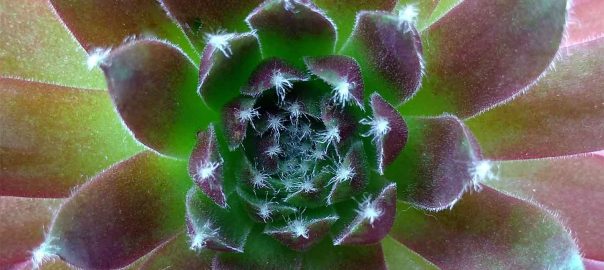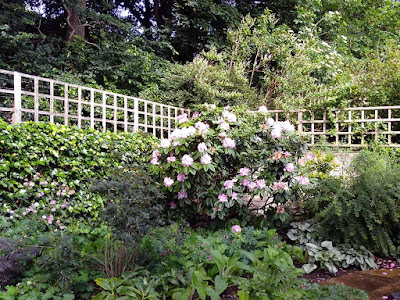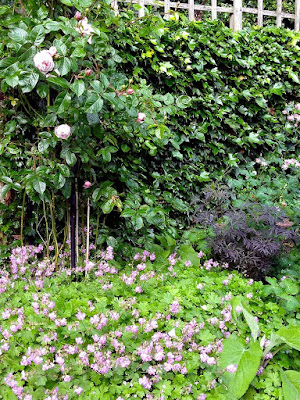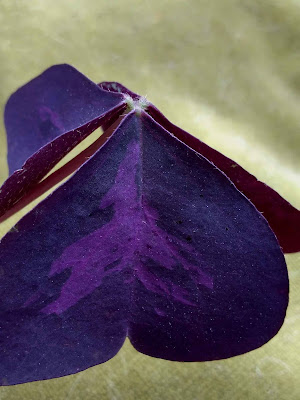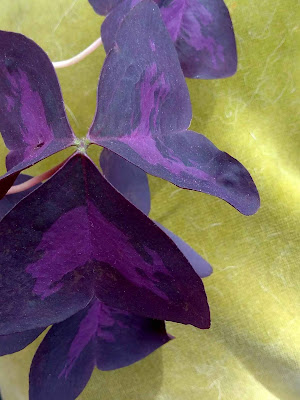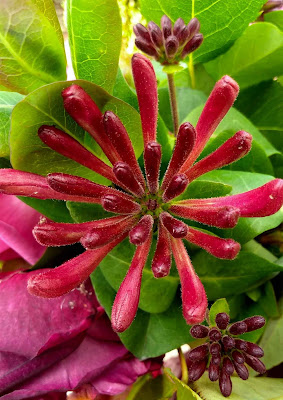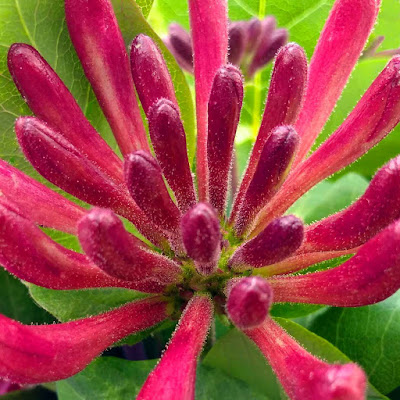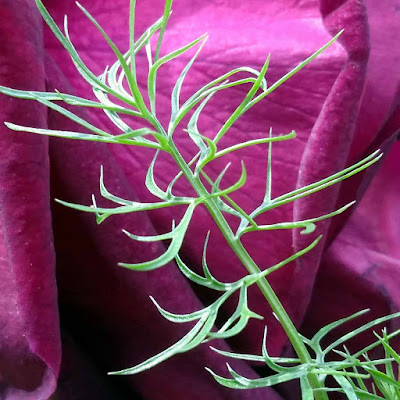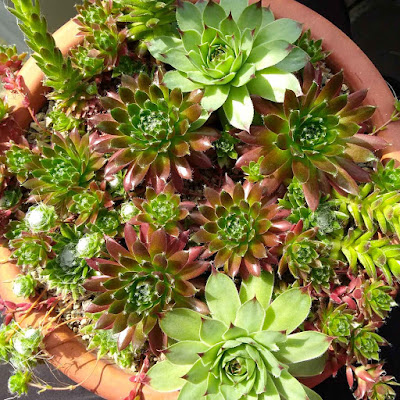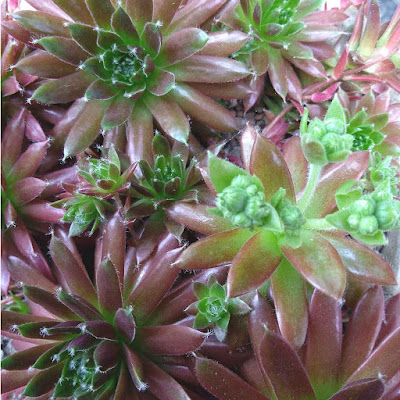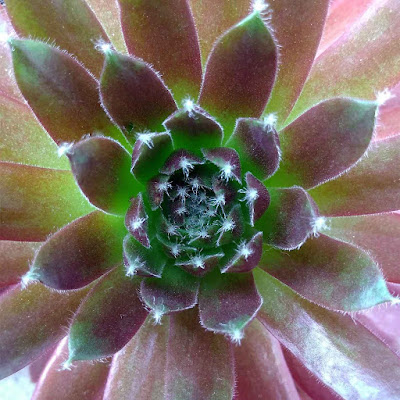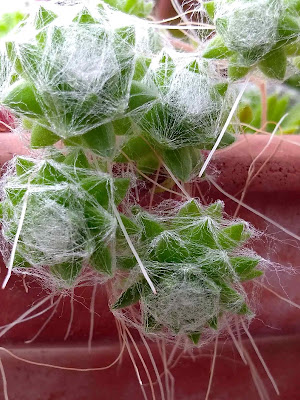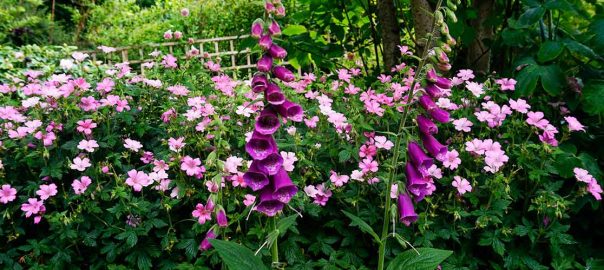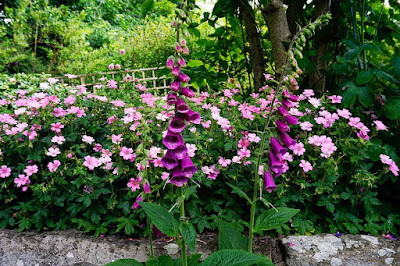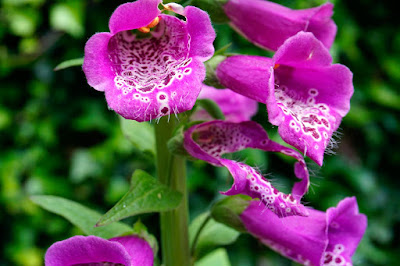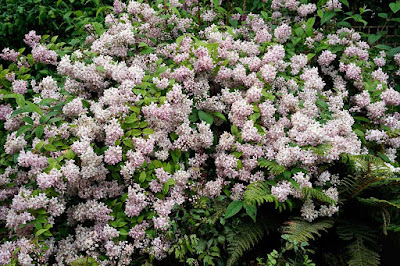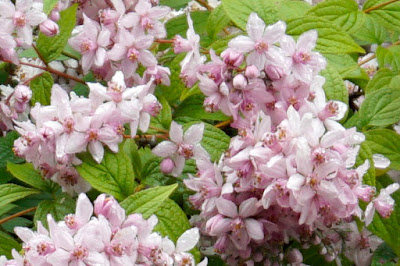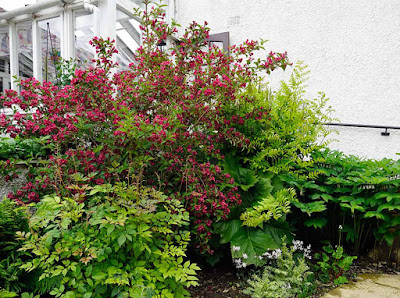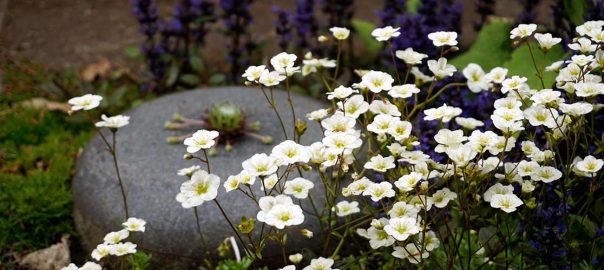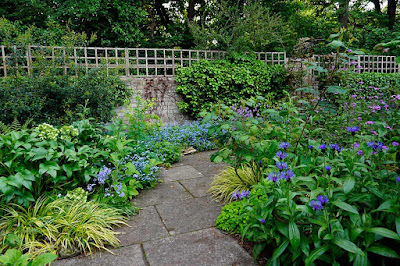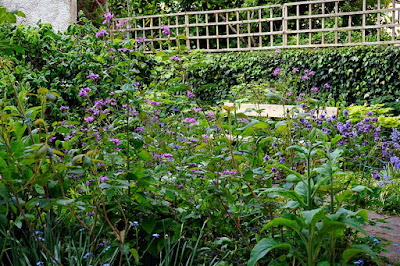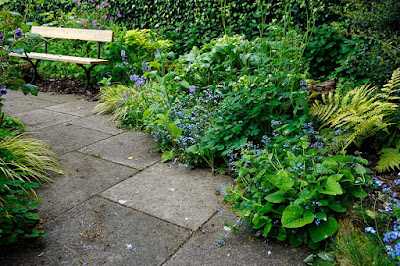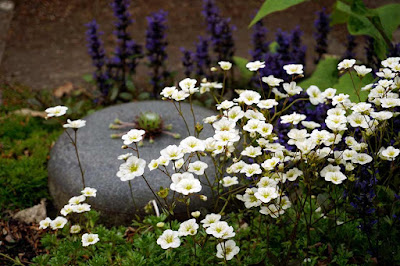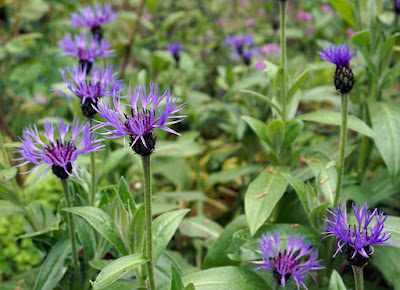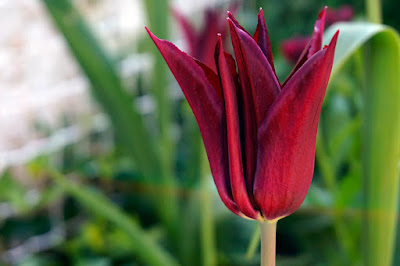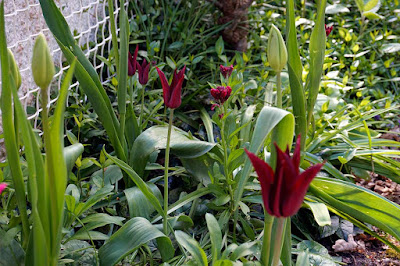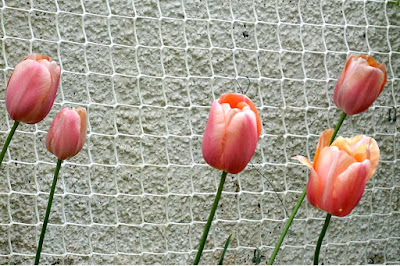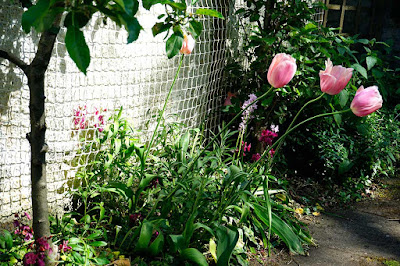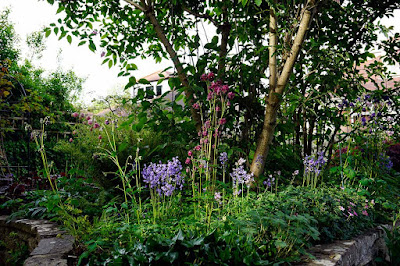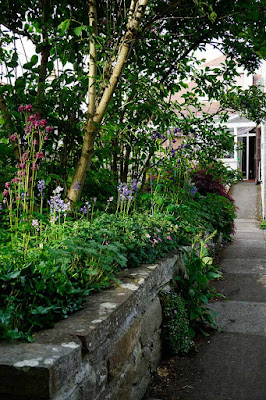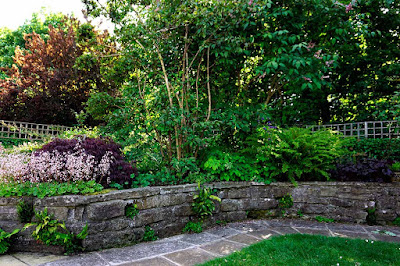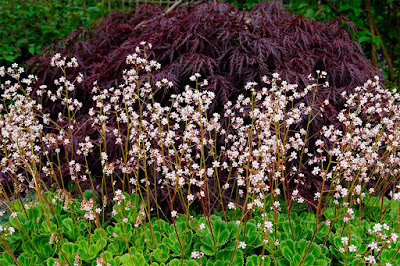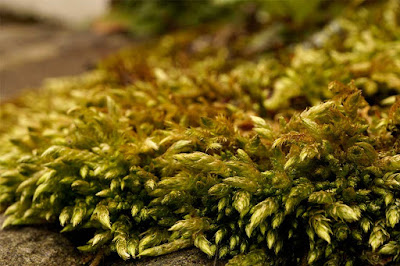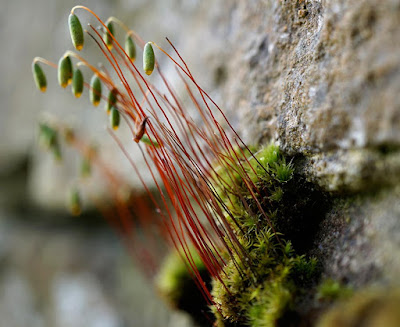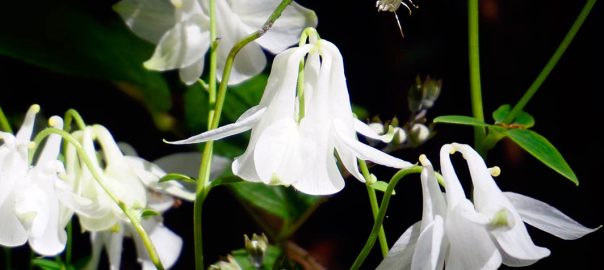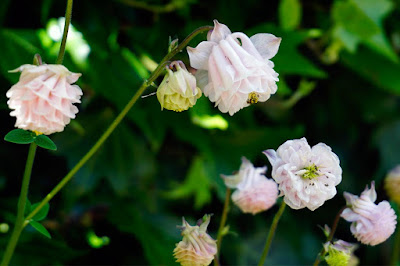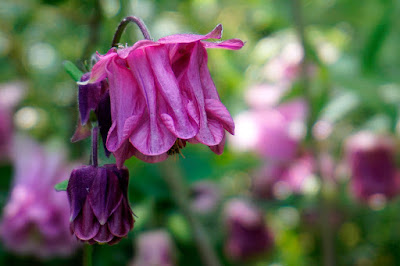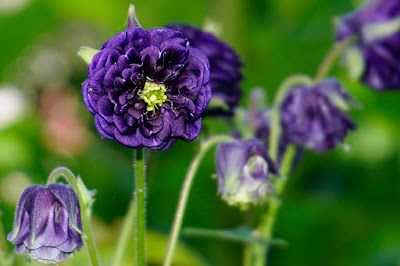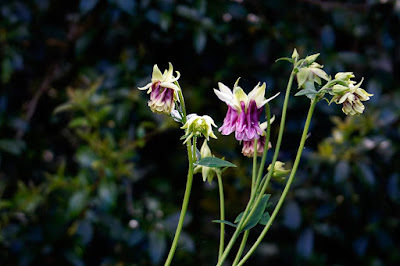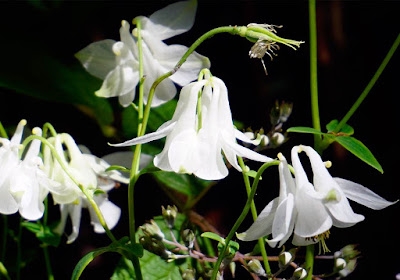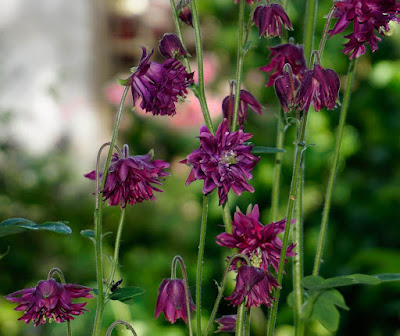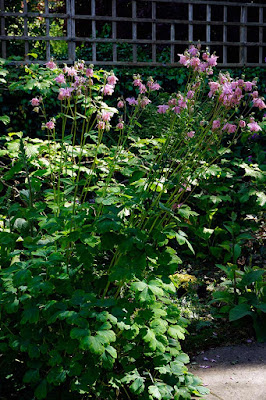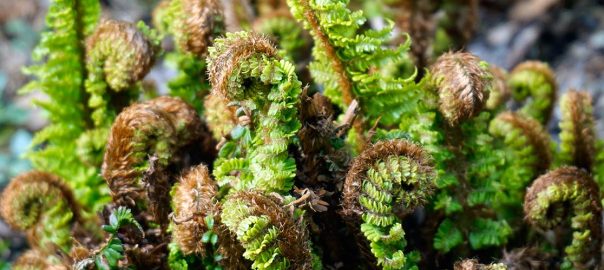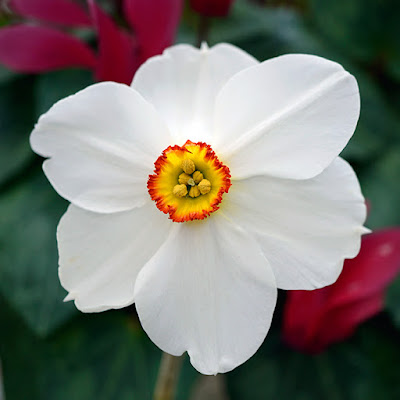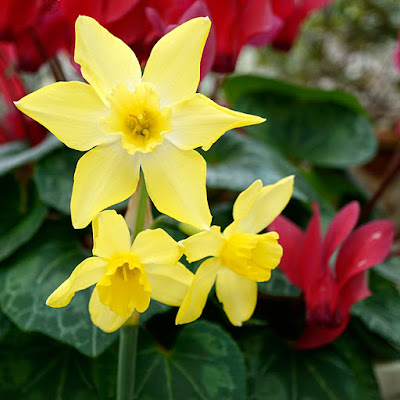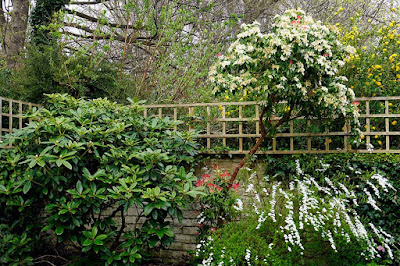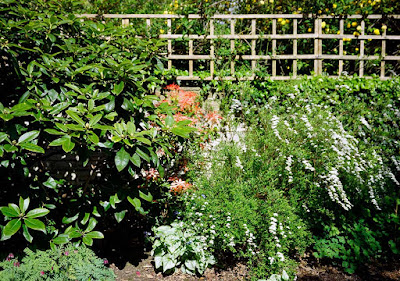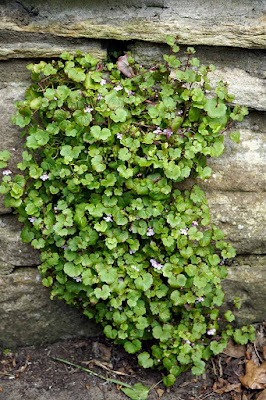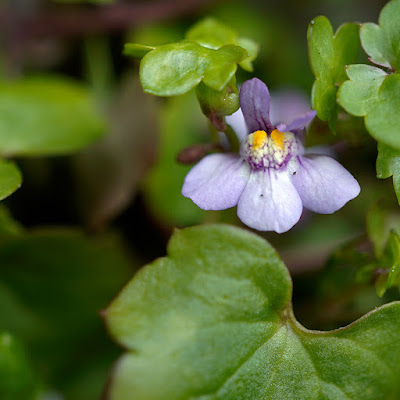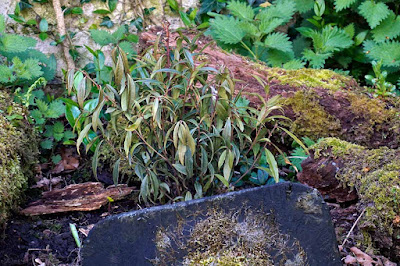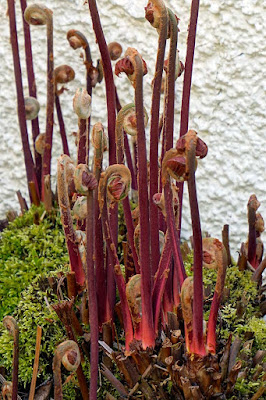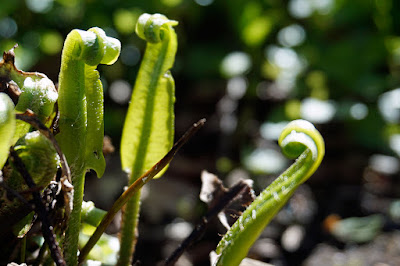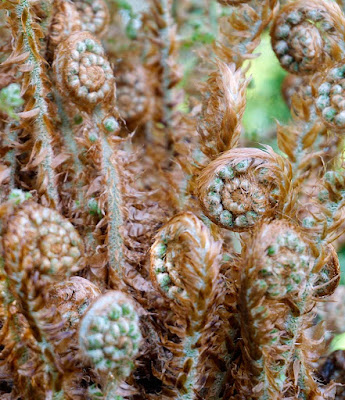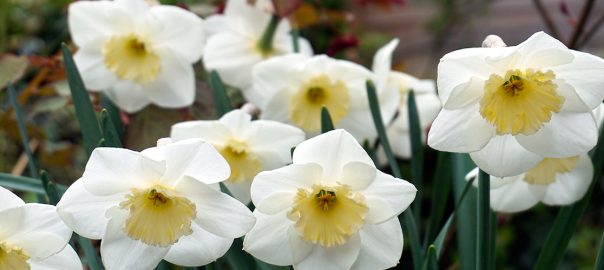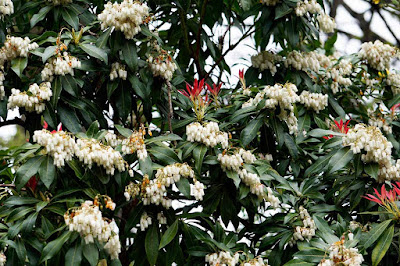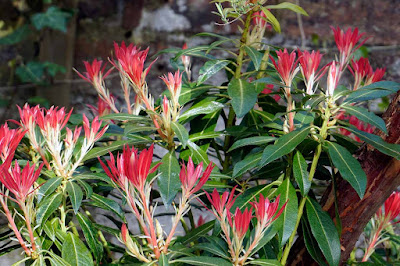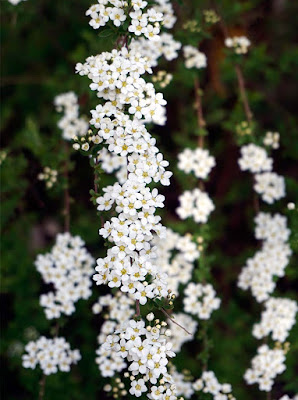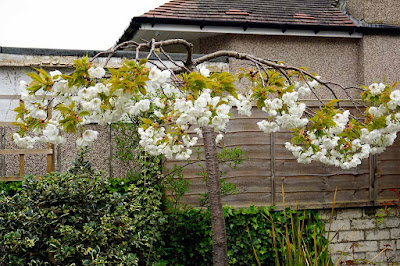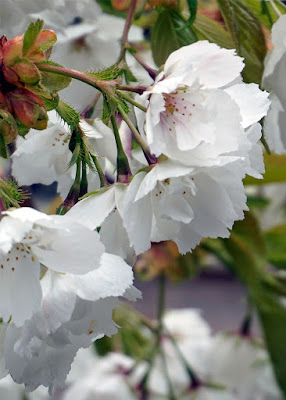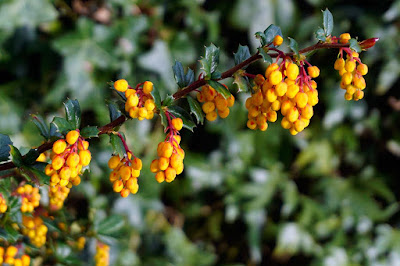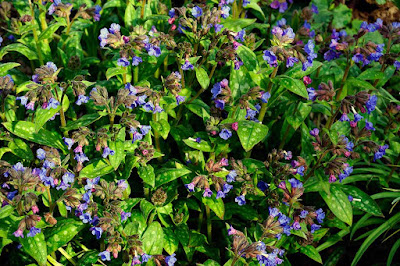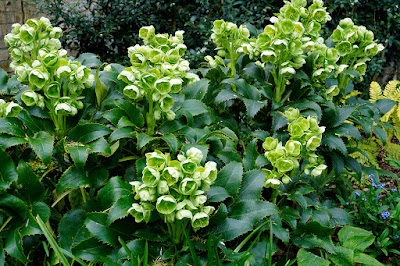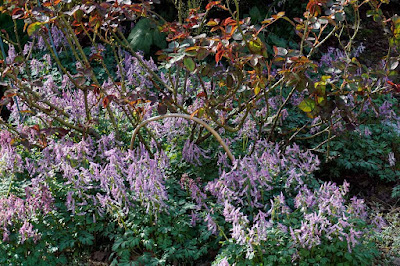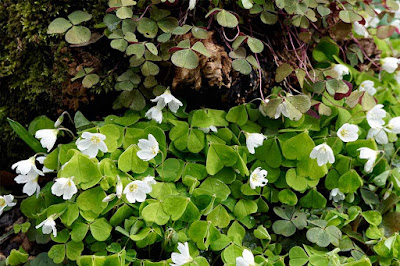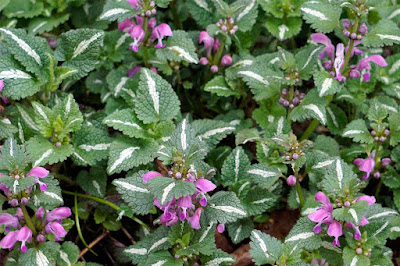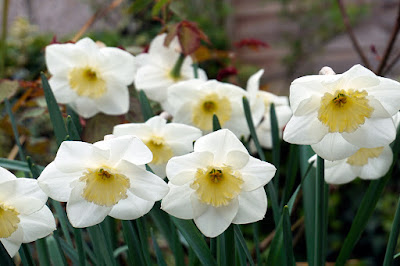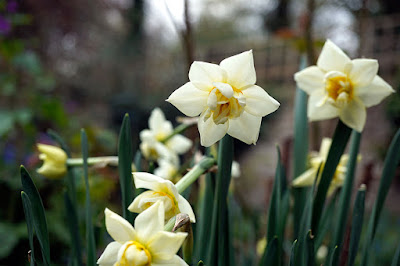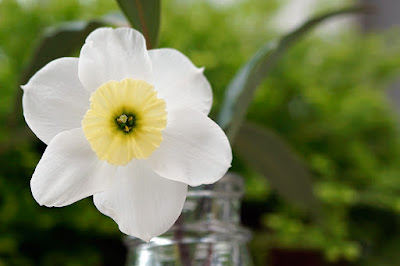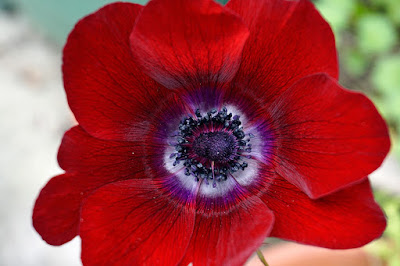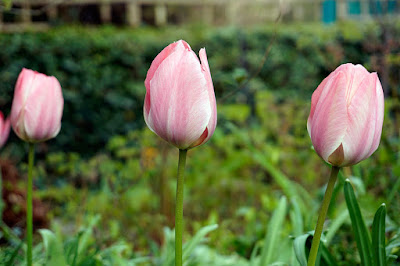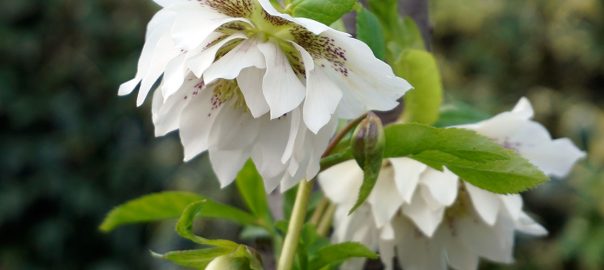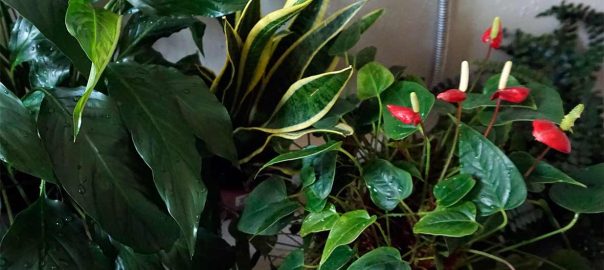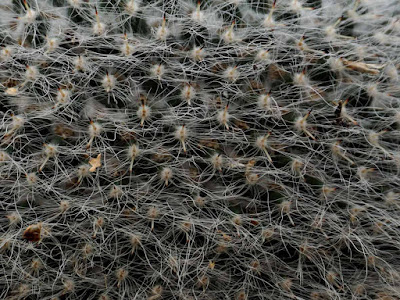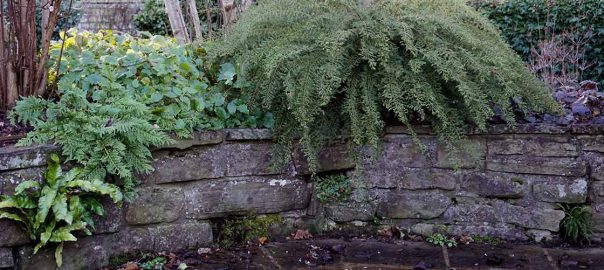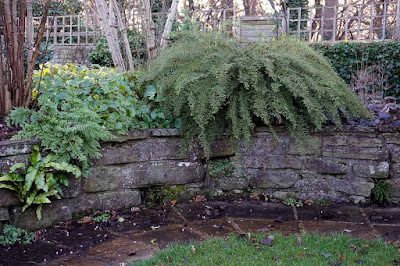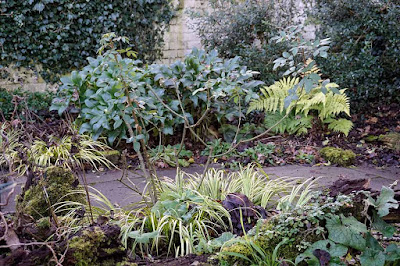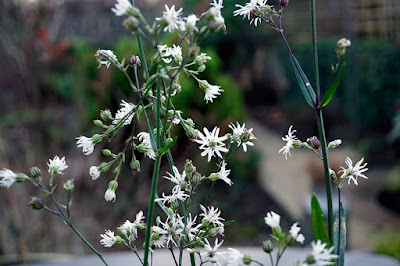Finally a bit of warm sunshine – warm enough for me to get a spot of gardening done and tidying up of the patio. February was such a wet month, the ground has not been able to dry off for months now. The patio is full of plants at the moment: some of which need to be planted in the back garden, while others are in little pots to be sold in May at the Duddingston Kirk Garden Club.
I have been waiting for my six double Hellebores to flower before I plant them as I couldn’t see any labels on them when they arrived from the nursery last year. They were only small plants and so were nice and cheap. Three have now flowered and have been planted, but three are still to flower. I do love Hellebores as they give great colour at this time of year and they clump up well. I had a couple of old large clumps that needed a bit of rejuvenation so I split the old large white clump so that I could have some in the stumpery as well as in the main bed. They didn’t mind at all being split and moved.
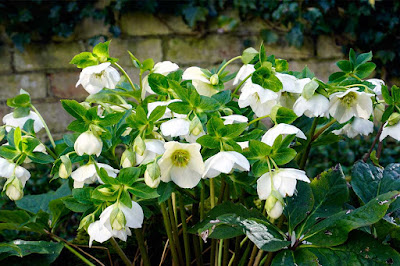 |
| Helleborus niger white |
I split the purple clump to have some at the back of the garden, raised bed and also the main bed. This one is in the raised bed which is much drier and shadier than the main bed so it doesn’t put on as good a show.
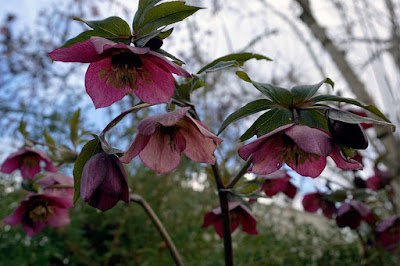 |
| Helleborus niger purple |
The one in the main bed is also in the shade, but it gets more rain than the raised bed, and the soil is more moisture retentive too. It loves it there.
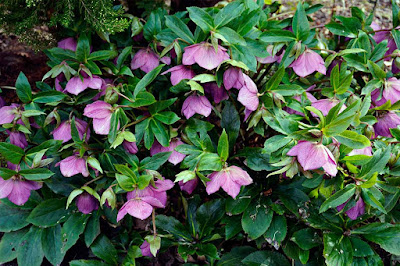 |
| Helleborus niger purple |
Of the six Hellebores that I bought last year, the Helleborus Double Ellen white spotted is doing ok (a little bedraggled but ok) and was not on the list – it may have been substituted instead of the double white but I won’t know until the others have flowered.
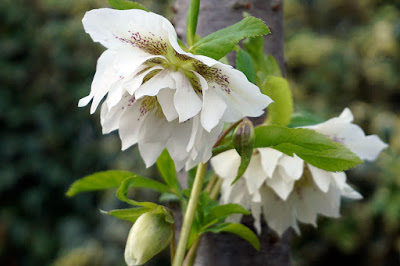 |
| Helleborus Double Ellen white spotted |
|
|
This next photo may be the Double form of Picotee but is is not in great shape so is pretty hard to tell.
(Just after I took the photo my new dog had a mad run around the garden and took both flower heads off! Grrrrrrrr!)
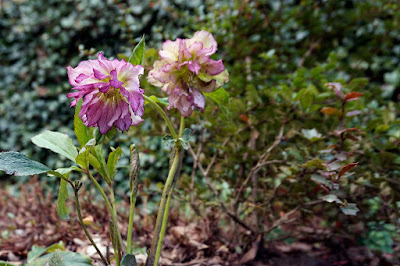 |
| Helleborus Double Ellen Picotee? |
The Double purple one is looking good and I can’t wait for them to clump up and put on a good display in the coming years.
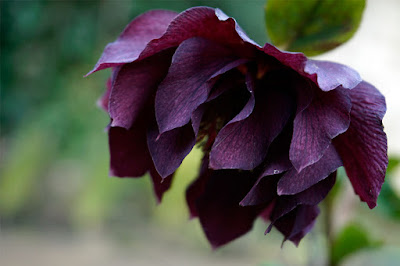 |
| Helleborus Double Ellen purple |
The Helleborus argutifolius is situated in the stumpery and is just starting to flower now. Their flowers last such a long time and are a quite bright, pale green that show up well against their very dark green foliage.
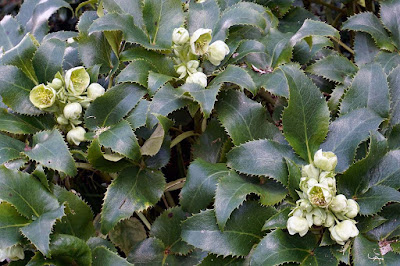 |
| Helleborus argutifolius |
Now I mentioned a new dog, well, he is a force to be reckoned with in the garden. He has already charged into my lovely Acer palmatum Dissectum atropurpureum and broken off a very large branch. He has trampled a few tulips (not in flower yet). He has ripped out a Verbena bonariensis, and has chewed on a few shrubs and just loves to leap about in my favourite fern! Argh! He is six years old (from the dog home) and still requires a bit of training so here’s hoping he will calm down a bit in the garden eventually. I have already removed my beautiful dark red rose (‘Erotica’) as it had extremely big lethal jaggy prickles and I didn’t want the dog to get hurt. The good news is that my good pals (neighbours) now have it in a position to deter opportunistic crooks.
There are a few bulbs in flower in the garden, like the purple crocus, but still waiting for the Narcissi and tulips. The conservatory is looking colourful just now with the reds of the cyclamen, yellow Narcissus Tete-a-Tete, purple Oxalis, green Selaginella Kraussiana and Soleirolia Soleirolli (mind your own business plant) and various Sempervivums, cacti and ferns. The greenfly are around already so I have to regularly check my plants to just keep the blighters from getting out of control.
 |
| Conservatory colour |
There is still no sign of frog spawn yet although the heron has been spotted on the garage roof again, and Harry did find a frog in the front garden. The first spawn in 2018, was on 20th March, then in 2019, it was 27th February. Wonder when it will be this year? The pond is very overgrown at one side and really needs dug out and replanted. That will be the next big job.
